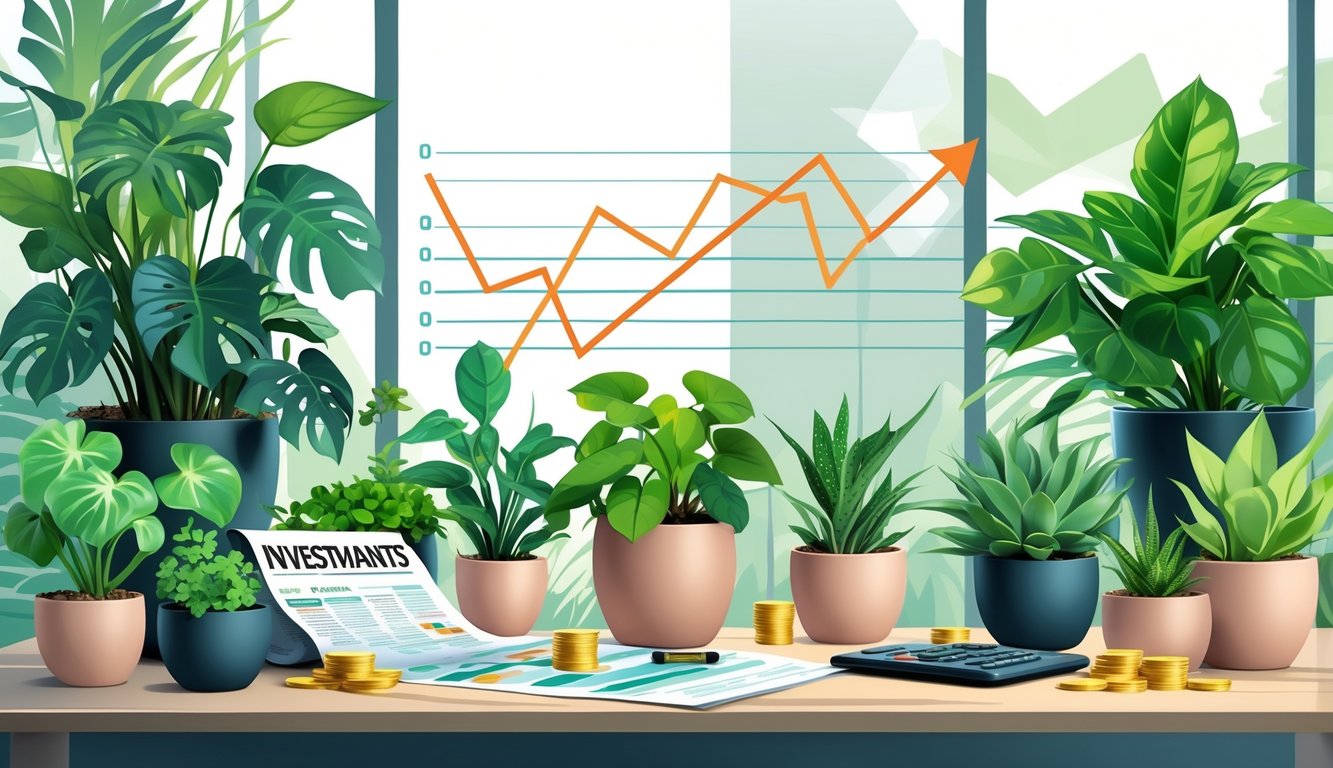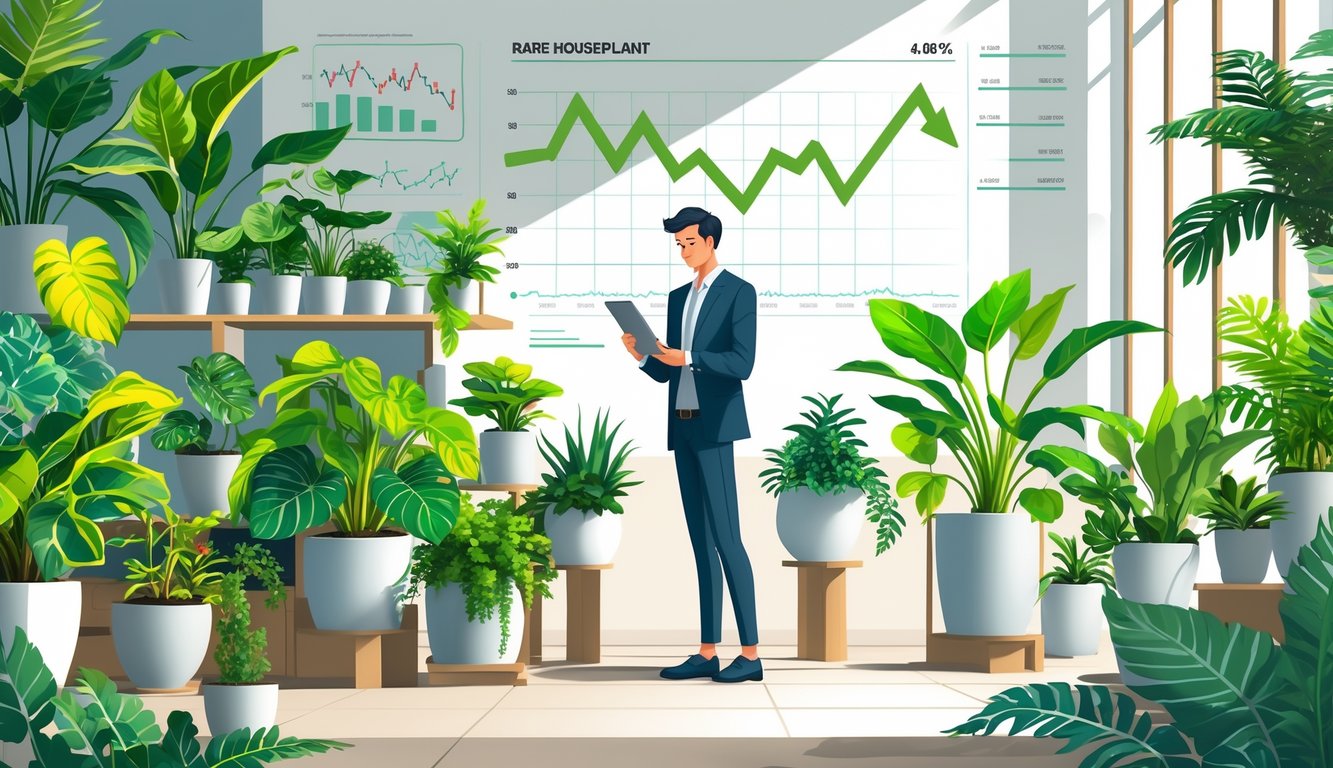
My friend blows up my phone at 2 a.m. about his mutual fund nosediving, and honestly, I’m just thinking, “Didn’t your Monstera Thai Constellation double since last spring?” It’s wild, but yeah, rare houseplants are somehow outpacing stocks. Not even kidding. If you haven’t noticed, stuff like Philodendron Spiritus Sancti now goes for more than blue-chip shares. Collectors, investors, random TikTokers—everyone’s in on it. This isn’t just another Instagram fever dream either; North Haven Gardens in Dallas said their rare plant sales shot up 318% in one year. (Here, look: www.nurserymag.com/article/lucrative-houseplants/). Meanwhile, my pothos is just… chilling. No ambition.
People keep bringing up “tulip mania” like that’s the only plant market story they know. Please. Unless you’re rooting bulbs in your living room, maybe hush. Even old-school collectors are glued to auction sites like Steve’s Leaves or Carnivero, watching prices get weird. (alts.co/investing-in-rare-and-exotic-plants/) It’s almost embarrassing, honestly. Supply chains get weird, TikTok goes feral, and then every plant thief on the planet gets involved. Prices? Up, up, up. Feels like someone’s Hoya with root rot—just swelling for no reason.
I keep waiting for the crash, but nope. Rare plants propagate at a snail’s pace, and suddenly everyone with a sunny windowsill thinks they’re the next plant tycoon. I remember people mocking three-digit price tags for “just a plant.” Now? Side hustlers are flipping rare species for the cost of a weekend getaway. Try getting a botanist to explain this. They’ll just argue about whether we’re in a collectible gold rush or losing our minds. (Here’s a Reddit thread if you want to spiral: new collectible boom.)
Understanding Rare Houseplant Investment

Nobody at the garden center tells you this, but buying rare plants is basically gambling on their price swings. It’s not about pretty leaves or Instagram likes—though, okay, sometimes it is. I’ve watched stuff like philodendron spiritus sancti or variegated monstera just skyrocket overnight, while the S&P 500 just shrugs. The plant market? It listens to rumors, Discord groups, and whatever TikTok trend is hot this week. Weather? Also a factor, weirdly.
What Makes a Houseplant Rare?
What does “rare” even mean anymore? Everyone says it, nobody agrees. It’s not just DNA. It’s a mess: tiny wild populations, annoying propagation (some plants need moss burritos and plastic wrap just to stay alive), trade bans, and those whiplash-inducing plant trends. Aroids from nowhere, tissue culture freaks, random color mutations—you’re basically paying for the privilege to hunt. Fun fact: met a guy who hoarded twenty spiritus sancti just to keep prices high and freeze out other collectors. Kind of evil genius, kind of just evil.
Value Drivers in the Plant Market
Prices don’t always make sense. Auctions? Sure. TikTok? Absolutely. Influencer “hauls” that make you question your life choices? Every week. It’s not just about the plant; it’s about scarcity and FOMO. Last year, a couple of “experts” told me to watch for cold chain screw-ups, import bans, and surprise hurricanes. One cyclone, and suddenly everyone’s monstera is three times as expensive. True story: The Rare Leaf nursery in Sydney sold out of new monstera clones in four minutes. Four. Minutes. Average price per node? Up 30%. Miss a trending blog post and you’re done. (collecting guides)
Types of Rare Houseplants
Trying to figure out what’s “rare” this week? Good luck. The “must-have” list changes faster than I can kill a fern. Anthurium warocqueanum one year, variegated monstera albo the next (someone paid $5,000 on eBay, I wish that was a joke). Calatheas with patterns, velvet-leaf philodendrons, carnivorous plants that get famous after a Netflix special—seriously, it happens. (Lists get outdated fast). Right now, it’s spiritus sancti, monstera Thai constellation, and anything with “mint” or “variegated” in the name. Anyone claiming there’s a stable top ten is probably flipping plants on the side.
Why Rare Houseplants Are Outperforming Stocks
Nobody has a real answer for this. Sometimes it’s a single Monstera leaf that kicks off a frenzy. (Remember the $5,000 sale? Still wild.) The plant market is chaos, niche demand explodes, and suddenly even Wall Street types are paying attention.
Historical Price Trends
If I admitted how many hours I spend scrolling collector forums, it’d be embarrassing. But I’ve watched variegated monstera jump from $200 to over $3,000 in under two years. Saw a Pink Princess Philodendron go for $4,500 in a closed Facebook auction. That one still hurts. I skipped Hoyas in 2021 and watched them quadruple in less than a year. Regret? Constant.
Regular houseplants? Snooze. Rare ones? They just break all the rules. Steve’s Leaves and other auction houses keep records—stuff sells out in days, not weeks. Scarcity isn’t hype, it’s just reality. Bidding wars, limited drops, overnight markups. And then, out of nowhere, Syngonium Milk Confetti goes nuts while stocks just… exist. I once saw someone slap an $800 tag on a reverted Philodendron. Instagram hype, that’s it. Makes you wonder why you’d bother with the S&P 500 when one leaf mutation can buy you a month’s rent.
Market Demand Factors
Here’s the weird part: plant market trends are more about psychology than anything. I hear this every time I talk to nursery wholesalers. Supply isn’t just grown, it’s manipulated, gamified, sometimes straight-up squeezed. “Rare” sometimes just means “we only released 10 and then hid the rest.”
Beginner collectors and “plantfluencers” go nuts for whatever’s trending. Milk Confetti Syngonium gets scarce? Suddenly, everyone wants it. Last month, people hated pink leaves; now, it’s all they want. I watched a grower jack up prices and link to a hard-to-find houseplants list. Nobody blinked. They bought more, faster.
Local shops? They’ll buy out a nursery, claim “out of stock,” and then triple prices next week. This isn’t about botany anymore. Half these plants are just riding a hype bubble that refuses to pop.
Comparing Returns to Traditional Investments
There’s something hilarious about sitting on a $2,000 Monstera while your brokerage app bleeds red. Insuring one of those plants? Nightmare. I skimmed a Deloitte report (because I can’t sleep) that said stocks average 7-10% a year. My friend’s terrarium corner went up 500% in one season. That’s bonkers and obviously not sustainable.
A chart would look ridiculous. Stocks? Slow and steady. Rare houseplants? Chaotic, unpredictable, sometimes doubling overnight. There’s no real trading platform for plants, so selling is basically finding the right Discord at the right hour and hoping two people are bored enough to start a bidding war.
Nobody’s supposed to think cuttings beat index funds. But sometimes, they do. Especially if you catch the trend before the big growers. (investing in rare and exotic plants). Best advice I ever got? Ignore influencer hype, watch for wholesale supply delays. That’s where the spikes start. Also, don’t leave a Thai import in your trunk overnight. It dies. Fast.